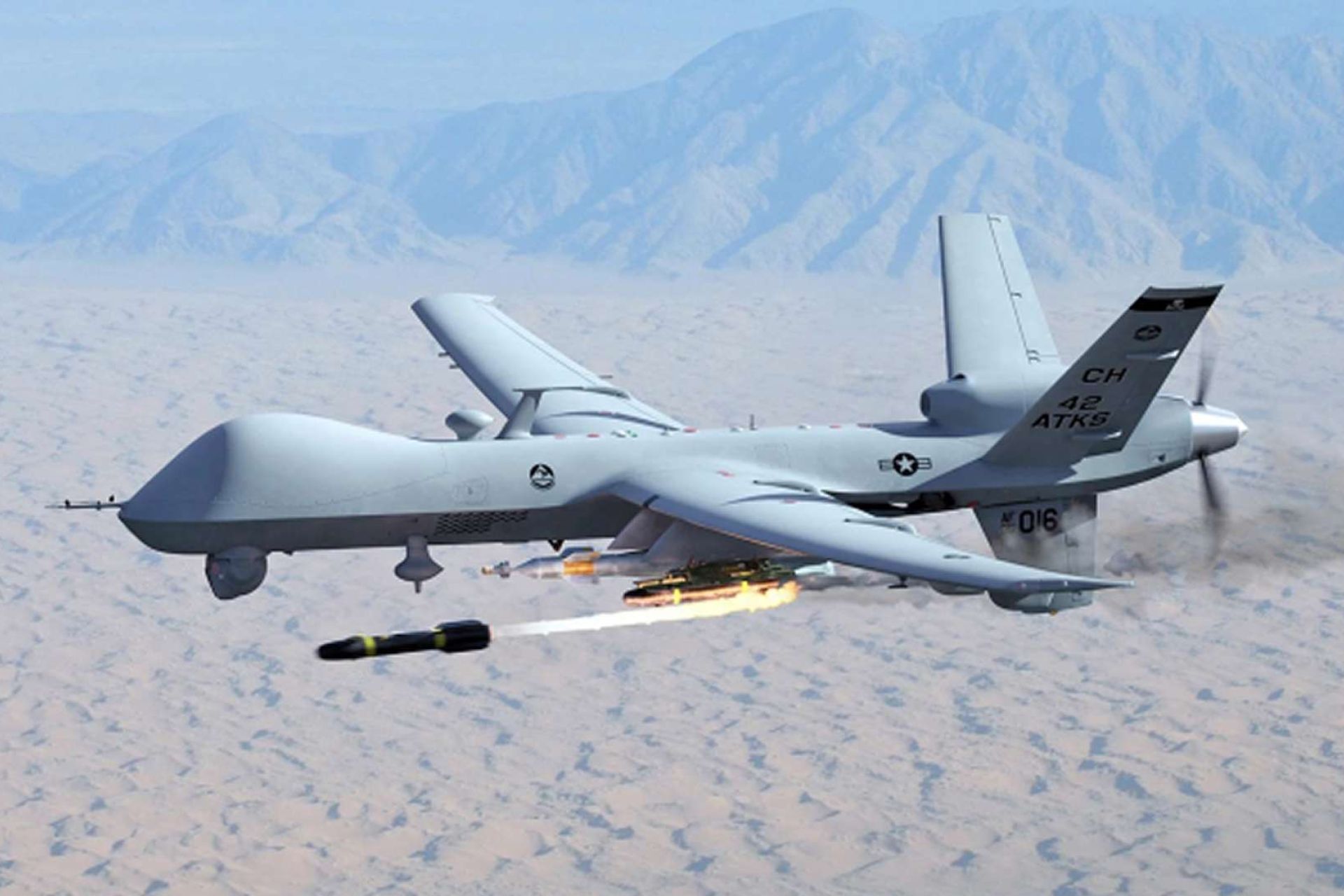Breaking News
India to Get 31 MQ-9B High Altitude Long Endurance Combat Drones.
On July 28, 2024, the Defence Acquisition Council (DAC), chaired by Defence Minister Rajnath Singh, reviewed and approved amendments to the contract for 31 MQ-9B High Altitude Long Endurance (HALE) Unmanned Aerial Vehicles (UAVs) from General Atomics of the United States.

General Atomics MQ-9B High Altitude Long Endurance (HALE) Unmanned Aerial Vehicles (UAVs) (Picture source: US DoD)
On July 28, 2024, the Defence Acquisition Council (DAC), chaired by Defence Minister Rajnath Singh, reviewed and approved amendments to the contract for 31 MQ-9B High Altitude Long Endurance (HALE) Unmanned Aerial Vehicles (UAVs) from General Atomics of the United States, according to defense sources.
"The approved amendments are in line with the Acceptance of Necessity (AoN) that was granted for the MQ-9B deal. They pertain to indigenous content and related aspects," a defense source stated.
Official sources indicated that the United States has completed its part of the process with a letter of offer and acceptance delivered to India in early March. It is now up to India to complete the procedures before the deal can be signed. In the final step, the agreement must be approved by the Cabinet Committee on Security before it can be finalized. With the Quad leaders' summit scheduled to be hosted by India in December, the MQ-9B deal, along with the GE-414 jet engine deal, are expected to be concluded during the visit of the U.S. President to India.
India plans to procure 31 MQ-9B UAVs, including 15 Sea Guardians for the Indian Navy and 16 Sky Guardians – eight for both the Indian Army and Air Force, estimated to cost $3.99 billion. As part of the deal, General Atomics is scheduled to establish a Global Maintenance, Repair, and Overhaul (MRO) facility in India, which would count towards offset obligations.
Indeed, the U.S. State Department approved a potential foreign military sale to India in February 2024, which includes MQ-9B Sky Guardian drones and related equipment for an estimated cost of $3.99 billion. The Defense Security Cooperation Agency has transmitted the required certification to Congress today, informing lawmakers of this planned sale.
India has expressed a desire to acquire thirty-one (31) MQ-9B Sky Guardian drones, along with various complementary equipment, including one hundred sixty-one (161) integrated inertial and satellite navigation systems (EGIs) and thirty-five (35) L3 Rio Grande communication intelligence sensor suites. The transaction also includes the acquisition of one hundred seventy (170) AGM-114R Hellfire missiles, sixteen (16) Hellfire M36E9 training missiles, three hundred ten (310) GBU-39B/B laser-guided small diameter bombs, and eight (8) GBU-39B/B guided test vehicles with live fuzes.
The sale would also include certifiable ground control stations, TPE-331-10-GD engines, Hellfire M299 missile launchers, KIV-77 cryptographic appliques, and other Identification Friend or Foe (IFF) equipment, among various other systems and supports.
The delivery of 31 MQ-9B Sky Guardian drones by the United States to India represents a significant milestone in the strategic and defense relations between the two nations. This acquisition is unsurprising, given the rising regional tensions in South Asia and India's growing need to modernize and expand its surveillance and reconnaissance capabilities.
The MQ-9Bs are capable of flying long hours at high altitudes, allowing for continuous surveillance over vast areas. This capability is crucial for India, which needs to monitor disputed borders with neighbors such as Pakistan and China. Continuous border surveillance will help detect and deter adverse military activities, as well as transnational terrorism.
For reference, General Atomics Aeronautical Systems developed the MQ-9B SkyGuardian to offer a modern and more effective solution than the already well-known MQ-9A Reaper. Technically, this new drone flies longer (+40 hours versus 27 hours for the Reaper) and has a greatly increased payload capacity (2,155 kg external + 363 kg internal versus 1,361 kg external + 386 kg internal for the Reaper).
These drones also facilitate cooperation with other allied forces equipped with similar technologies, thus strengthening multilateral operations for regional security and responding to initiatives like the "Quad," a strategic dialogue that includes Australia, India, Japan, and the United States.
Payload Capabilities: The MQ-9Bs can carry a variety of payloads, including ISR (Intelligence, Surveillance, Reconnaissance) sensors, making them extremely useful for intelligence-gathering missions. They are also equipped to carry munitions, such as Hellfire missiles, providing India with a capability for precise long-range strikes.
With a flight endurance of over 40 hours, the MQ-9Bs can operate over long distances without direct human support. This extended endurance is particularly beneficial for countries like India with large geographical spaces and extensive surveillance responsibilities.
Equipped with AESA (Active Electronically Scanned Array) radars, advanced communication, and encryption systems, these drones offer enhanced compatibility and security, essential for operations in contested environments.
The MQ-9Bs will be particularly useful for monitoring hostile activities along India's contested borders, including troop movements or adversarial military infrastructures in hard-to-access regions. Faced with the persistent threat of terrorism, they will provide a surveillance platform capable of collecting vital intelligence to prevent attacks before they occur.
For example, the use of MQ-9B Sky Guardian drones in the mountainous context of Kashmir offers a solution tailored to the unique challenges presented by its complex topography and access constraints. A major advantage of these drones is their ability to operate at high altitudes. The MQ-9B can fly over mountain peaks without being hindered by rough terrain, significantly facilitating intelligence gathering in high-altitude areas like Kashmir. This feature allows for effective and continuous surveillance, essential for intelligence and security in this strategically sensitive region.


























